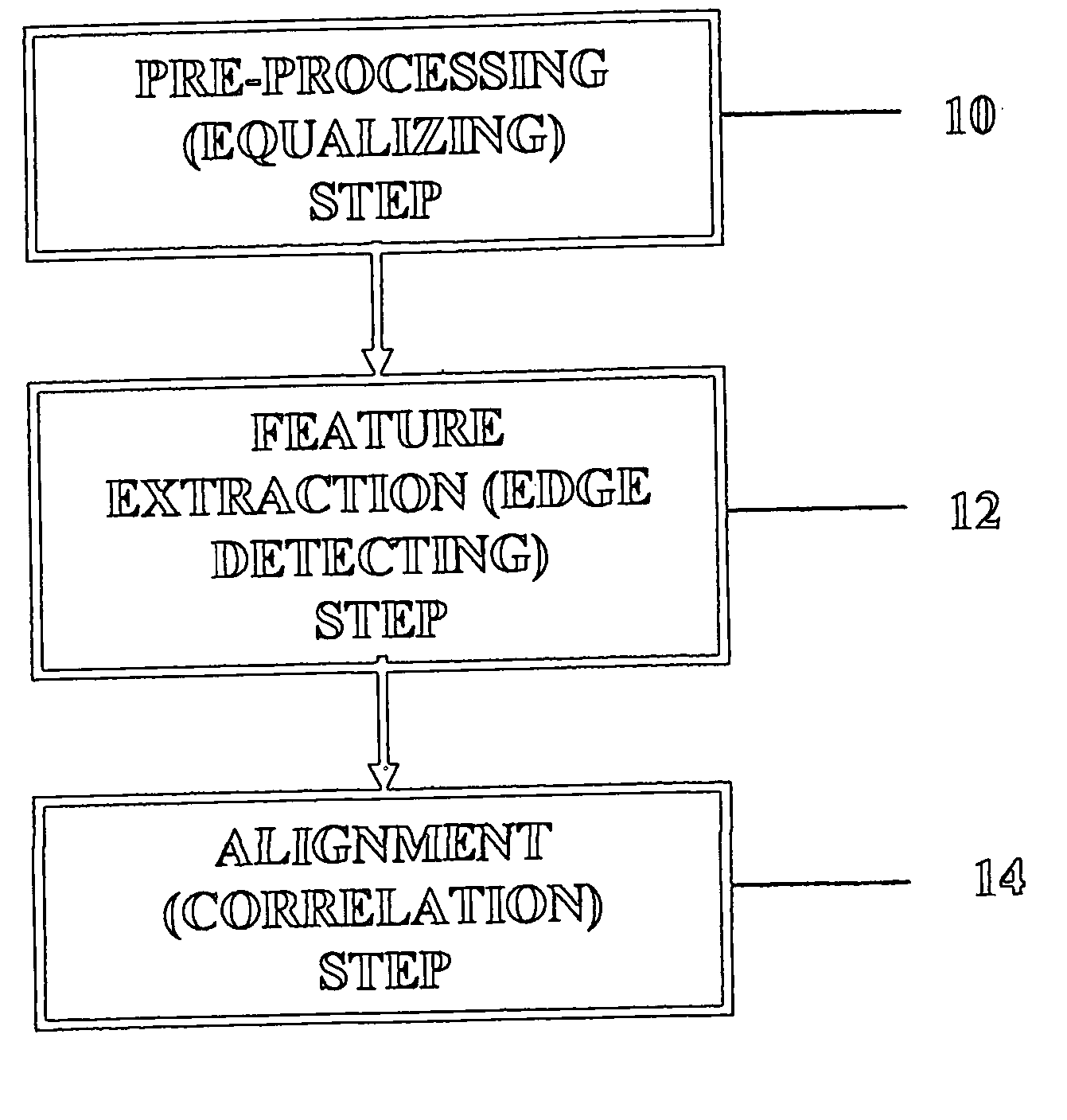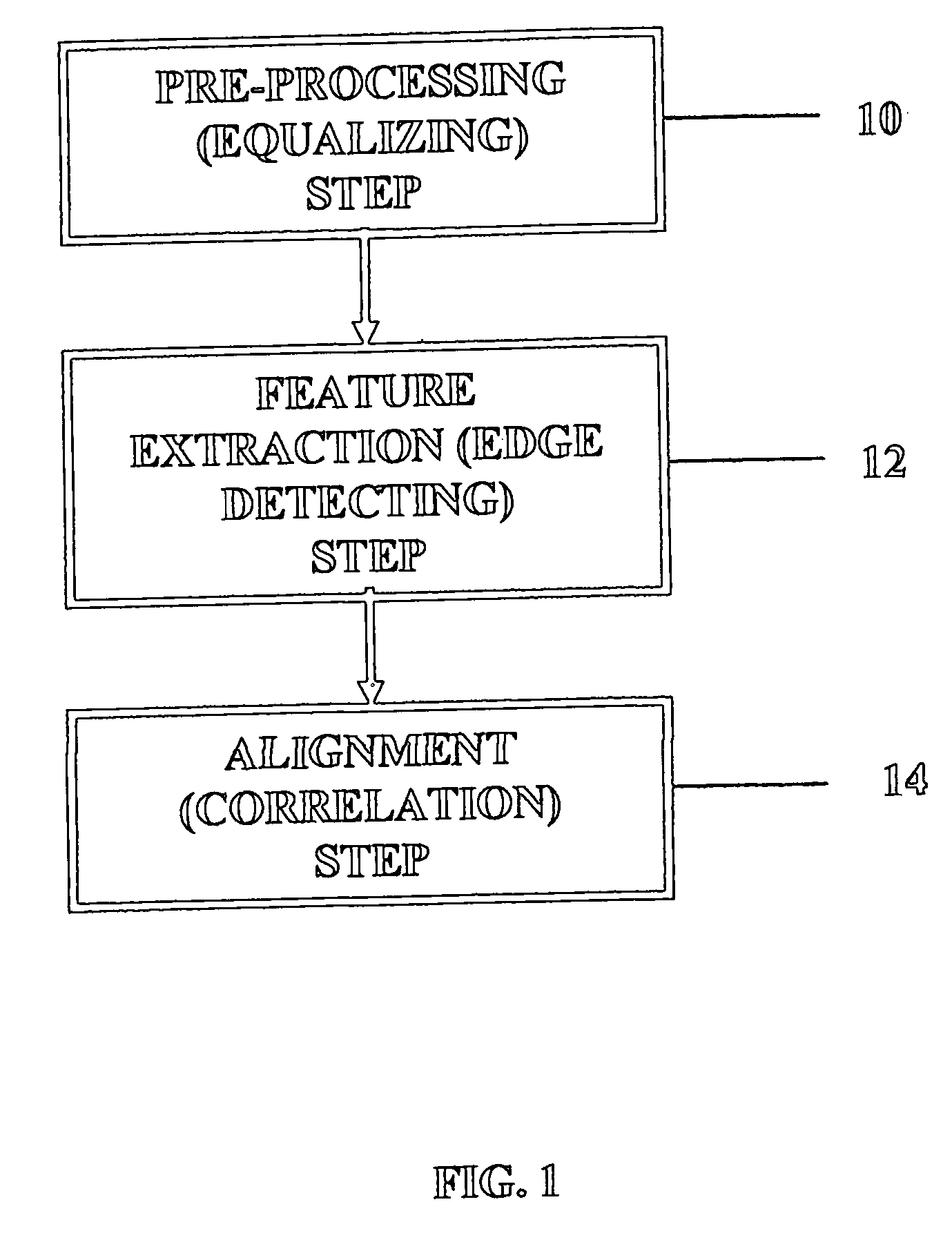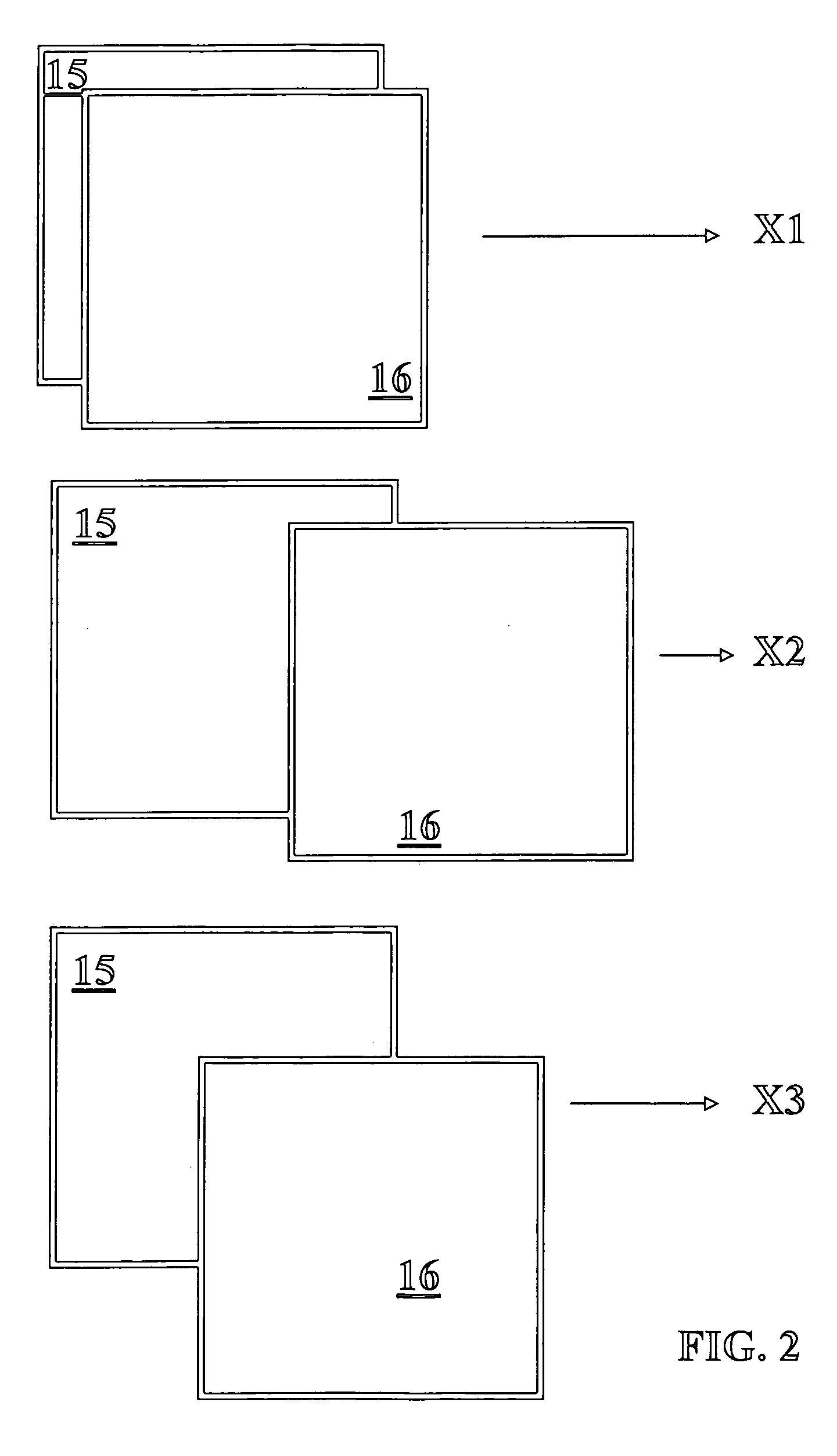Feature-based composing for 3D MR angiography images
a technology of composing and mr angiography, applied in the field of system and method of composing images for magnetic resonance angiography, can solve the problems of not being able to obtain the full body scan at once, and the amount of data, and achieve the effect of optimizing alignment and maximizing correlation valu
- Summary
- Abstract
- Description
- Claims
- Application Information
AI Technical Summary
Benefits of technology
Problems solved by technology
Method used
Image
Examples
Embodiment Construction
[0020] Medical imaging devices, such as a magnetic resonance imaging machine, produce volumes. In today's imaging procedures a plurality of volumes of a body are taken, creating a plurality of volumes of data.
[0021] In accordance with one aspect of the present invention, a plurality of volume are processed and then aligned to form one volume. The volumes are preferably derived from Magnetic Resonance Angiography procedures, but can be derived from other medical imaging techniques. In accordance with one aspect of the present invention, the technique first detects edges in volumes and then aligns them using normalized cross correlation. Speedup is preferably achieved by multi-resolution processing. Results show alignment errors that are within the tolerance of a human observer judgment of what the actual best manual alignment is, on average 1.28, 3.60, 2.05 voxels in horizontal, vertical and depth directions respectively.
[0022] Referring to FIG. 1, the steps to align a plurality of...
PUM
 Login to View More
Login to View More Abstract
Description
Claims
Application Information
 Login to View More
Login to View More - R&D
- Intellectual Property
- Life Sciences
- Materials
- Tech Scout
- Unparalleled Data Quality
- Higher Quality Content
- 60% Fewer Hallucinations
Browse by: Latest US Patents, China's latest patents, Technical Efficacy Thesaurus, Application Domain, Technology Topic, Popular Technical Reports.
© 2025 PatSnap. All rights reserved.Legal|Privacy policy|Modern Slavery Act Transparency Statement|Sitemap|About US| Contact US: help@patsnap.com



